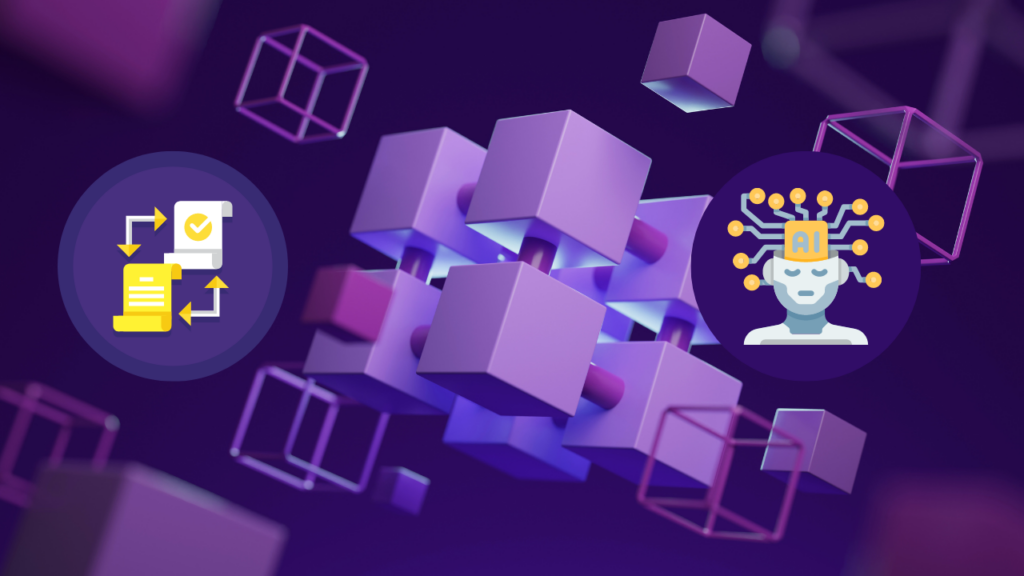Exploring DLT and blockchain: A comparative analysis of Hedera, Bitcoin, Ethereum, and how they integrate with AI technologies

In the ever-evolving realm of digital technologies, Distributed Ledger Technologies (DLT), like blockchain, have marked revolutionary milestones. They are changing trust dynamics with how transactions and assets are transferred in networks without centralized authority. Hedera, Bitcoin, and Ethereum are among the DLTs that have emerged as preeminent examples, each demonstrating unique characteristics and utility. Here, we delve into these platforms’ specifics and emphasize their energy consumption through consensus mechanisms, transaction speeds, and their uses in the burgeoning field of AI.
Understanding DLT and Blockchain
DLTs are digital systems that allow simultaneous access, validation, and record-keeping by multiple users. At the heart of its framework is the decentralized structure, which opposes traditional centralized database systems. Blockchain, a type of DLT, is a growing list of records or blocks, each containing a cryptographic reference to the previous block, a timestamp, and transaction data, offering unparalleled security benefits.
Hedera Hashgraph
Hedera is another DLT built on hashgraph technology, a consensus mechanism different from blockchain. It offers high throughput, low fees, and fair ordering of transactions, all critical features for mainstream adoption.
- Energy usage: Hedera claims to be energy-efficient, with a Proof-of-Stake (PoS) model that significantly reduces the energy required to process transactions. Unlike Proof-of-Work (PoW), which requires extensive computational work and energy, PoS chooses validators based on the number of tokens held, making it inherently more energy-efficient.
- Transactions Per Second (TPS): With its hashgraph consensus, Hedera surpasses many competitors, processing thousands of transactions per second to address the scalability issue facing other blockchain systems.
Bitcoin
Bitcoin, the blockchain’s first implementation, relies on the PoW consensus mechanism. Its revolutionary approach to peer-to-peer transactions has garnered worldwide attention.
- Energy usage: Bitcoin mining is energy-intensive, requiring massive computational effort to solve cryptographic challenges. While this ensures security, the environmental impact is substantial, contributing to significant carbon footprints.
- Scalability issues: Bitcoin can only handle 3 to 7 TPS. To tackle this scalability issue, Bitcoin introduced Lightning Network. This second-layer protocol works on top of the Bitcoin blockchain to enable faster and cheaper transactions. This creates off-chain payment channels to significantly reduce the burden on the blockchain and provide a more scalable approach.
Ethereum
Acting as both a platform for decentralized applications (dApps) and a cryptocurrency, Ethereum is a trailblazer in its flexibility and adaptability.
- Energy usage: Traditionally, Ethereum used PoW, entailing energy concerns similar to those of Bitcoin. However, its transition to Ethereum 2.0 will employ a PoS model to slash energy consumption considerably and offer a more sustainable model.
- Transactions per second: Ethereum currently processes around 15-45 transactions per second. However, Ethereum 2.0 promises increased throughput. Techniques like sharding and splitting the blockchain into several shards that run in parallel will contribute to this improvement.
Comparing transactions speed
Hedera leads in TPS, followed by Ethereum 2.0 and Bitcoin, respectively. While Bitcoin’s Lightning Network significantly improves transaction efficiency, it isn’t a native blockchain feature, and its adoption is a response to scalability limitations.
DLT/Blockchain and AI: the ideal match
Marrying AI with DLT or blockchain opens avenues for enhanced security, data integrity, and reliability in AI applications. The decentralized nature of DLT ensures data utilized by AI algorithms is untampered, reliable, and traceable.
Deciding on the best network for AI integration involves examining transaction costs and speeds. Hedera, with its high TPS and low fees, stands out for real-time AI processes needing rapid responses. Ethereum, with its smart contract capability, is ideal for dApps with AI, and its Ethereum 2.0 will make it more competitive in terms of speed and cost.
DLT and blockchain selection is more complex than one-size-fits-all. Hedera may appeal to those prioritizing environmental concerns and transaction efficiency. At the same time, Bitcoin enthusiasts might value its robustness and pioneering status, willing to overlook scalability and environmental drawbacks. Ethereum strikes a balance between versatility in decentralized development and ambitious strides towards energy efficiency.
For AI applications, the choice hinges on specific needs. Speed and low-cost transactions might favour Hedera, but the robust development environment of Ethereum cannot be discounted. As these networks continue to evolve, understanding their trajectories will be paramount in leveraging their capabilities to the fullest, particularly as they intersect with other frontier technologies like AI.


































